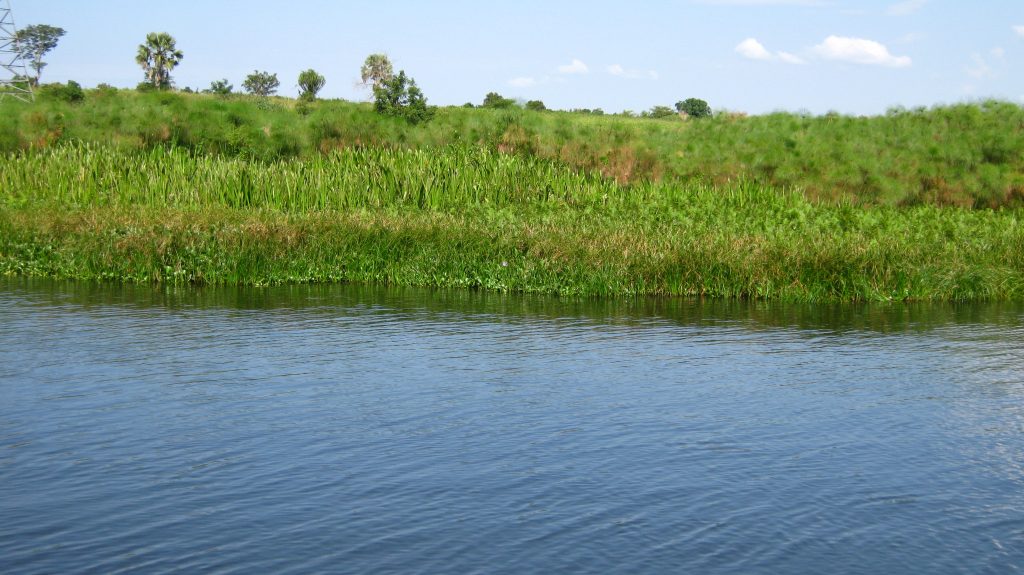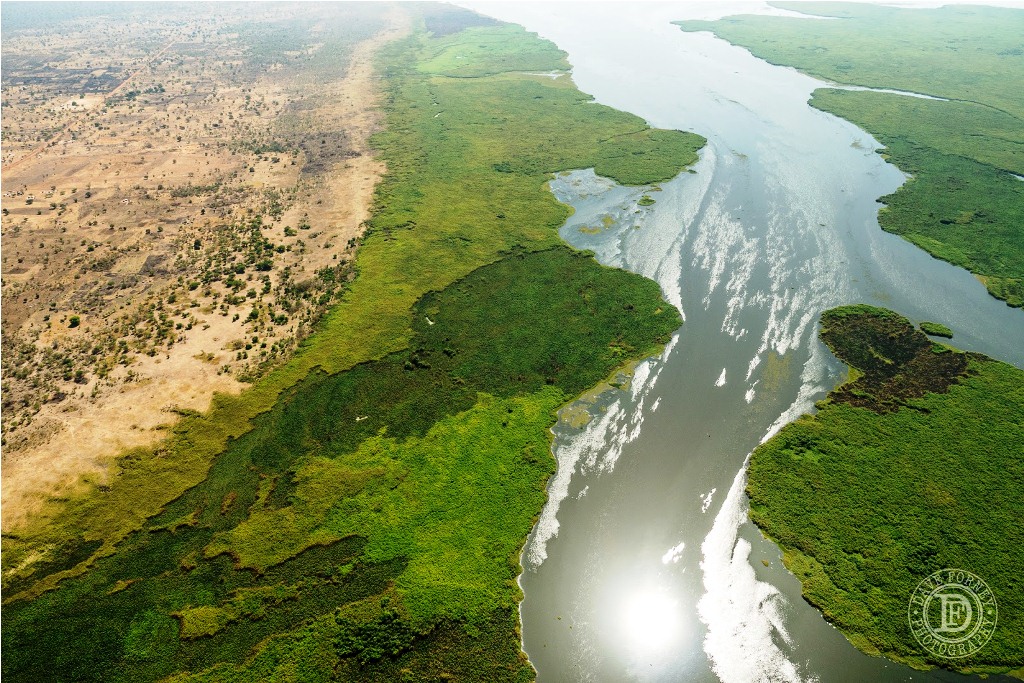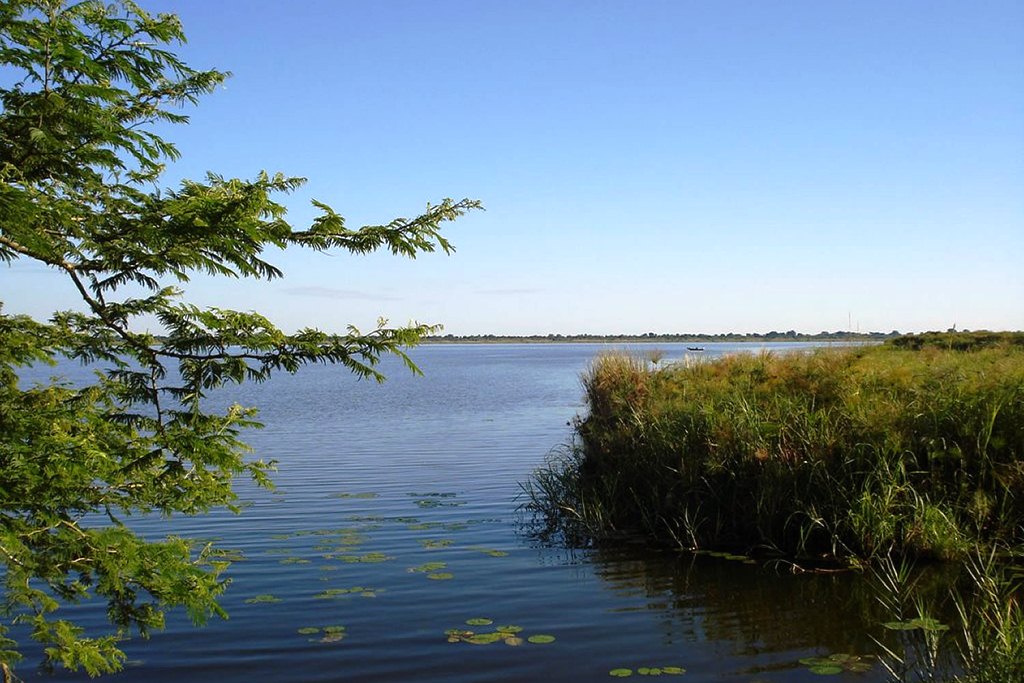Lake Kyoga is about 1,720 km2 in area and at an elevation of 1,033 metres. The Victoria Nile flows through the lake on its way from Lake Victoria to Lake Albert. The main inflow is from Lake Victoria at the Source of the Nile river in Jinja. Another source of water is the Mount Elgon region. Lake Kyoga is part of the Great Lakes system.
Also named Kioga, Lake Kyoga is one of the shallow Lakes in Uganda, is found within the north-eastern and central parts of the country and was formed by the mighty Victoria Nile in its middle course. This River flows through this shallow Lake while on its way from the massive Lake Victoria to Lake Albert.
This Ugandan water body sits within an area of altitude of 1033 meters (3,389 feet) above sea level and has a Total Surface Area of 1,729 square kilometres (660 square miles) with a maximum length of 200 kilometres (120 miles) and depth of only 5.7 meters (19 feet). Besides the Victoria Nile, another source of water for this Lake is Mount Elgon on the Kenya-Uganda border and surprisingly, much as the Lake is considered to be part of the vast Great Lakes system, it is actually not regarded as a Great Lake.

Lake Kyoga reaches a depth of about 5.7 metres, and most of it is less than 4 metres deep. Much of the swampy shoreline is covered with papyrus and water hyacinth. The papyrus also forms floating islands that drift between a number of small permanent islands. Extensive wetlands fed by a complex system of streams and rivers surround the lakes. The Lake is blanketed by water lilies while the majority of the swampy shoreline is characterized by mainly water hyacinth and papyrus which also form the floating Islands after moving between several small permanent Islands. Vast expanses of marshlands are drained by a system of Rivers and streams that also border Lake Kyoga and the nearby small and shallow Lake Kwania. Therefore, the extensions of this shallow Lake include Lakes Opeta, Kwania and Bisina, forming finger-like Lakes system which is completely surrounded by marshlands during the rainy seasons. 46 species of fish including Nile Perch that was introduced in 1950s have been found in Lake Kyoga, and crocodiles are numerous while on Uganda Safaris.
When you explore the Lakes in the Lake Kyoga basin, you will discover that they are shallow with depths of only or less than 9 meters and interestingly, Lake Opeta usually forms a separate Lake during the dry season.
Flora and Fauna within and around Lake Kyoga
This shallow Lake is characterized by swampy papyrus-reeded shores, large tracts of papyrus that are broken loose by strong winds that sometimes entirely block the Nile river, making navigation only possible by shallow-draft vessels between Masindi Port and Namasagali. Lake Kyoga is surrounded by vast wetlands that are fed by a complex system of streams and rivers that all offer habitats to wide range of fish species, and the flora species here include the water Lettuce, Hyppo grass, water lilies, Cyperus Papyrus and Cattail among others.
There are over 46 species of fish within Lake Kyoga including Nile Perch, Tilapia, Mud fish (within the shallow swamps), Catfish, lungfish and silverfish among others while the deeper shorelines are habitats to numerous crocodiles.

The Nile Perch were originally not found in this shallow Lake but were introduced in the late 1950s. However, the introduction of Nile Perch fish also came with negative effects because it led to the extinction of several domestic fish species including Barbus Kiogae, Tilapia variabilis, Claris mossambicus, Haplochromis macrodon, Synodontis victoriae, Tilapia esculenta and Schilbe mystus and Mormyrus kanumme among others to thrill while on Uganda Safaris Tours.
This Lake and the surrounding areas experiences a Tropical climate (mainly due to its altitude) characterized by two rainy Seasons-October to December and March to May while the dry season starts from December to February with the general temperatures of the northern side of the Lake being higher than the southern part.


